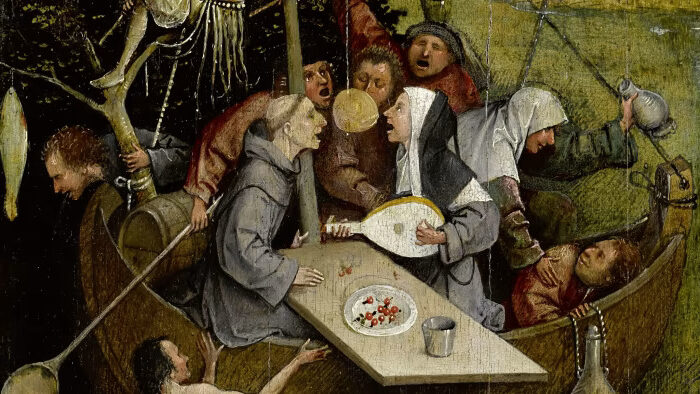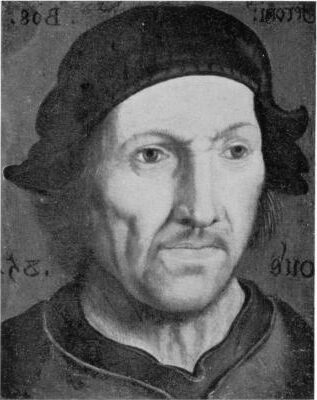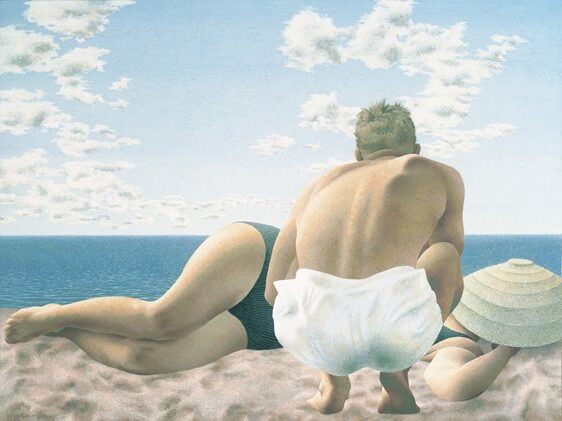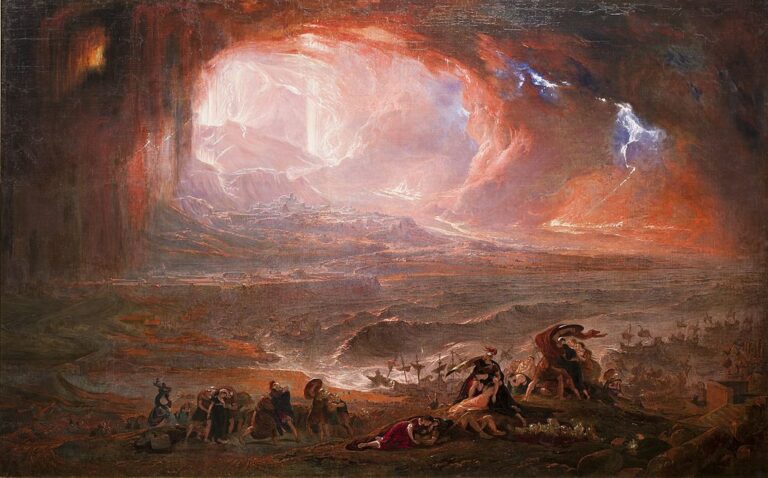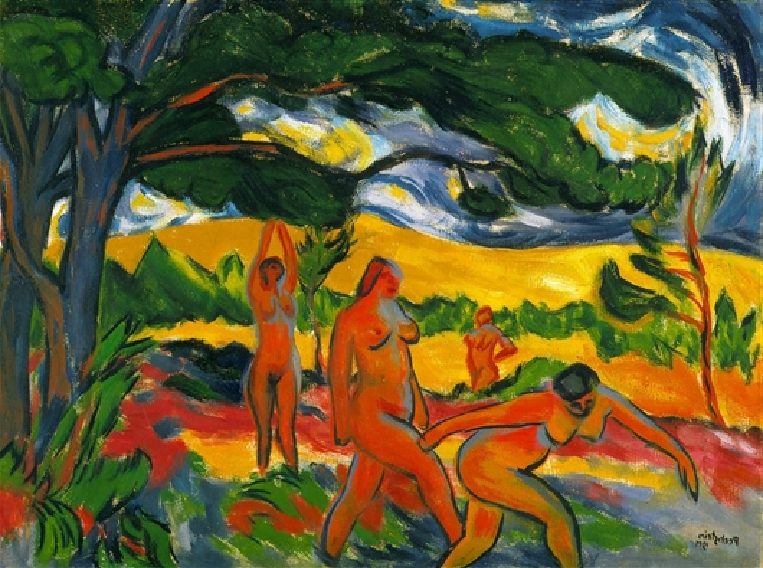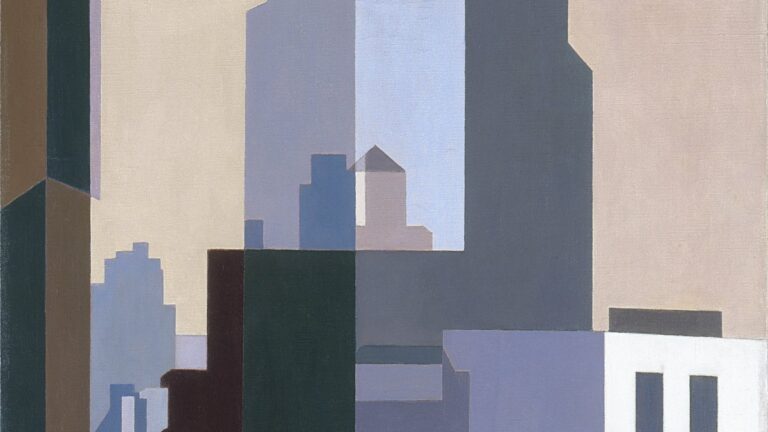Hieronymus Bosch Painter: Medieval Master of Symbolic Imagery
Born: c. 1450, Duchy of Brabant, Burgundian Netherlands
Death: 9 August 1516, Duchy of Brabant, Habsburg Netherlands
Art Movement: Early Netherlandish, Renaissance
Nationality: Dutch
Teacher: Anthonius van Aken (His Father)
Hieronymus Bosch Painter: Medieval Master of Symbolic Imagery
Life and Career of Hieronymus Bosch
Hieronymus Bosch, born Joen or Jeroen van Aken around 1450, led a life that is surprisingly obscure for such an influential artist. Much of what we know comes from limited records and analysis of his remarkable paintings.
Early Years and Artistic Training
Bosch was born in ‘s-Hertogenbosch (also called Bois-le-Duc), a thriving town in northern Brabant in the Netherlands. He came from a family of artists, with his father Anthonius van Aken and his grandfather both working as painters. This artistic environment likely provided his initial training.
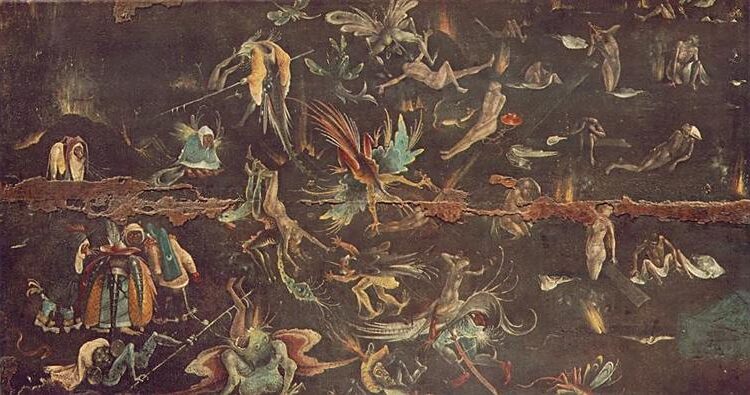
The Last Judgment (detail) (c. 1480) by Hieronymus Bosch
Unlike many Renaissance artists, no documents confirm formal apprenticeships or travels. Scholars believe Bosch probably never left the Netherlands, instead developing his unique style through local influences and his imagination.
His early artistic development remains largely mysterious. The town of ‘s-Hertogenbosch influenced his work with its Gothic architecture and religious atmosphere. Early paintings show a skilled artist already developing the bizarre imagery and moral themes that would define his career.
Membership in the Brotherhood of Our Lady
In the 1480s, Bosch joined the Brotherhood of Our Lady (Illustre Lieve Vrouwe Broederschap), an elite religious confraternity devoted to the Virgin Mary. This connection proved crucial to his career and reputation.
The Brotherhood included influential citizens, clergy, and nobles. Membership gave Bosch social standing and important commissions. Records show he created both paintings and designs for stained glass windows for the Brotherhood.
His position in this religious organization might seem at odds with his fantastical art. However, his membership helps explain his deep knowledge of religious symbolism and access to patrons. The Brotherhood’s records provide some of the few documented dates in Bosch’s life, confirming his active participation from 1486 to 1487.
Late Career and Death
By the early 1500s, Bosch had established a significant reputation. He received commissions from prominent patrons, including Philip the Fair, Duke of Burgundy. His distinctive style—filled with bizarre creatures, moral warnings, and religious imagery—found an appreciative audience.

The Temptation of St. Anthony (detail) (1460–1516) by Hieronymus Bosch
Bosch married Aleyt Goyaerts van den Meerveen, a wealthy woman from an established family. Their marriage brought financial security, allowing artistic freedom. They had no recorded children.
Records indicate Bosch died in August 1516. His funeral mass was held at the Church of Saint John (Sint-Janskerk) in his hometown where he had spent most of his life. After his death, his unique artistic vision influenced generations of artists, though few could match his imaginative power. His works became highly collectible, with Philip II of Spain acquiring several pieces.
Painting Style and Themes
Hieronymus Bosch developed a truly unique painting style that set him apart from his contemporaries. His work combines detailed realism with fantastical elements that continue to fascinate viewers today.
Development of Surrealist Imagery
Though Bosch lived centuries before the Surrealist movement, his work is often considered an early forerunner to surrealism. His paintings blend realistic elements with dreamlike, impossible scenarios that challenge perception and reality.

Haywain (detail) (1495–1500) by Hieronymus Bosch
Bosch was one of the first artists to represent abstract concepts through visual imagery. This innovative approach evolved throughout his career, becoming more complex and symbolic over time.
His early works show influences from Dutch illuminators and panel-painters of the fifteenth century. As he matured, his style became increasingly distinctive, characterized by rich colors and bizarre imagery.
The triptych format became Bosch’s preferred method for expressing complex narratives. In works like “The Garden of Earthly Delights,” he uses this three-panel format to show biblical scenes transformed into strange, otherworldly landscapes.
Use of Symbolism and Representation of Sin
Bosch’s paintings are filled with symbols that had specific meanings to viewers of his time. Many of these symbols relate to religious concepts, particularly sin and its consequences.
His work shows deep insight into humanity’s desires and fears. He frequently depicts human folly, greed, and moral weakness through visual metaphors that would have been understood by his contemporaries.
Bosch often used everyday objects as symbols. A knife might represent violence, while certain fruits could symbolize temptation. His paintings reward careful study, as almost every element carries symbolic weight.
The representation of sin in Bosch’s work is particularly striking. He portrays sinners undergoing bizarre punishments that match their transgressions. These moral lessons are delivered through strange and memorable imagery.
Monsters and Fantastical Creatures
Perhaps the most distinctive aspect of Bosch’s style is his creation of fantastical creatures and monsters. These beings often combine human, animal, and inanimate elements in disturbing ways.

Hermit Saints Triptych (c. 1505) by Hieronymus Bosch
His monsters serve multiple purposes in his paintings. Some represent demons tormenting sinners, while others embody specific sins or human failings. Many seem to exist simply to create an atmosphere of unease and otherworldliness.
Bosch’s creature designs show remarkable creativity. Fish-like beings walk on land, birds transform into boats, and humans merge with musical instruments. This imaginative approach to depicting the supernatural influenced countless artists after him.
The detailed rendering of these impossible beings demonstrates Bosch’s technical skill. Despite their fantastical nature, his creatures have a disturbing believability that makes them all the more effective as moral warnings.
Notable Works
Hieronymus Bosch created extraordinary paintings that continue to captivate viewers with their bizarre imagery, moral messages, and technical excellence. His masterpieces are recognized for their fantastical creatures, religious symbolism, and meticulous detail.
The Garden of Earthly Delights Triptych
“The Garden of Earthly Delights” is Bosch’s most famous work, created around 1490-1500. This triptych presents a visual narrative moving from Paradise on the left panel, through earthly pleasures in the center, to Hell on the right.
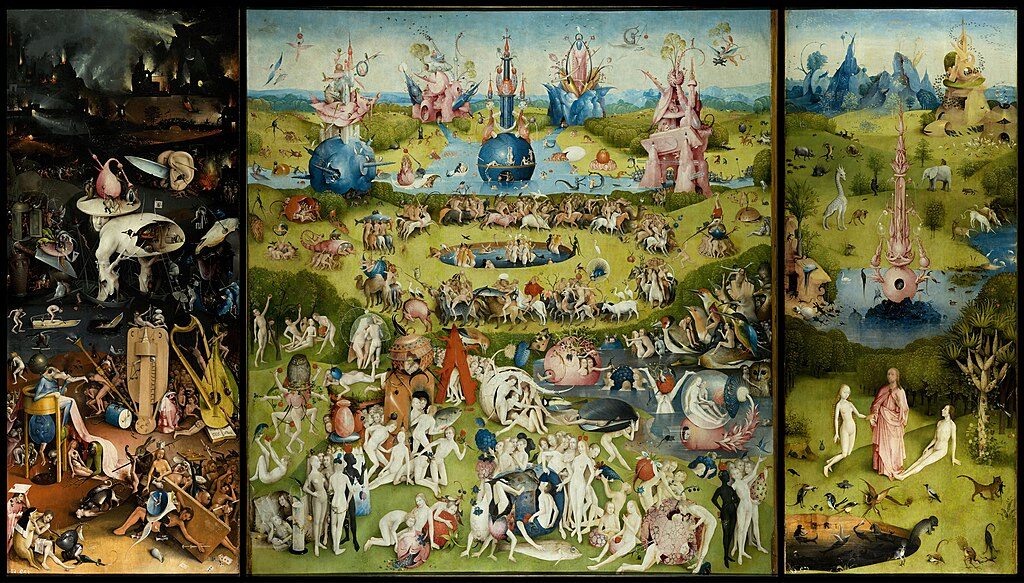
The Garden of Earthly Delights (1490–1500) by Hieronymus Bosch
The left panel depicts Adam and Eve in Paradise with God. The center panel shows a dreamlike landscape filled with nude figures, oversized fruits, and strange creatures engaging in various pleasures.
The right panel portrays a nightmarish vision of Hell with tortured souls and bizarre punishments. Each punishment corresponds to a specific sin, showing Bosch’s moral concerns.
Currently housed in the Prado Museum in Spain, this masterpiece demonstrates Bosch’s unparalleled imagination and technical skill. Its complex symbolism continues to generate scholarly debate about its intended message regarding human sin and divine judgment.
Oil on Oak Panel Technique
Bosch primarily worked with oil paints on oak wood panels, a common practice among Early Netherlandish painters. This technique allowed him to create the intricate details and luminous effects characteristic of his work.
He typically began with a white ground layer on the oak panel, then sketched his compositions before applying thin, translucent layers of oil paint. This layering method created depth and richness in color.
His panels often featured smooth transitions between colors and precise detailing that would have been impossible with other media of his time. The durability of oak panels has helped preserve his works for over 500 years.
Bosch’s brushwork ranged from delicate, fine strokes for minute details to broader applications for landscapes and larger forms. His mastery of this technique allowed him to render his fantastical visions with striking clarity and precision.
Other Significant Paintings
“The Temptation of St. Anthony” triptych showcases Bosch’s skill at depicting spiritual trials through bizarre creatures and surreal landscapes. This work portrays the saint’s resistance to worldly temptations through a series of hallucinatory scenes.

Triptych of the Temptation of St. Anthony (c. 1501) by Hieronymus Bosch
“The Haywain Triptych” presents a moral allegory about greed, showing humanity’s pursuit of material wealth (symbolized by hay) while being led toward Hell. Its central panel displays people from all social classes fighting over hay.
“The Last Judgment” triptych depicts the final judgment of souls, with vivid scenes of salvation and damnation. Its hellish landscapes contain some of Bosch’s most inventive torments and demonic figures.
“The Ship of Fools” offers a satirical view of human folly through the metaphor of a boat filled with irrational characters. This painting exemplifies Bosch’s gift for social commentary through strange imagery.
Frequently Asked Questions
Hieronymus Bosch remains one of art history‘s most enigmatic figures. His unusual imagery and symbolic paintings continue to provoke questions from art enthusiasts and scholars alike.
What is the significance of Hieronymus Bosch’s art?
Bosch was revolutionary as one of the first artists to represent abstract concepts through his paintings. His work broke from traditional religious art of his time by introducing complex symbolic imagery.
His detailed fantastical scenes offer unique social commentary on human folly, sin, and morality. Many art historians consider him a pivotal figure bridging medieval art traditions and Renaissance innovation.
Bosch’s significance also lies in his enduring influence on later artistic movements, particularly Surrealism. His ability to visualize the unseen realms of dreams, nightmares, and moral philosophy makes his work timelessly relevant.
Can you describe the main themes in Hieronymus Bosch’s work?
Religious and moral themes dominate Bosch’s paintings. He frequently depicted the consequences of sin, human folly, and the eternal struggle between good and evil.
His work often features fantastical creatures, hybrid monsters, and bizarre scenes representing temptation and human weakness. Many paintings illustrate biblical stories or religious concepts through complex allegory rather than literal interpretation.
The Garden of Earthly Delights, his most famous triptych, explores paradise, earthly temptations, and the torments of Hell. Bosch consistently demonstrated concern with humanity’s moral choices and their spiritual consequences.
Which museums house the largest collections of Bosch’s paintings?
The Museo del Prado in Madrid holds several masterpieces including The Garden of Earthly Delights triptych. This Spanish collection represents the largest single gathering of Bosch’s surviving works.
The Noordbrabants Museum in ‘s-Hertogenbosch, the artist’s hometown in the Netherlands, maintains an important collection. The Bosch Research and Conservation Project is also based here.
Other significant Bosch works can be found at the Museum of Fine Arts in Ghent, the Louvre in Paris, and the Metropolitan Museum of Art in New York. Due to the rarity of his authentic works, even museums with just one painting are considered notable Bosch collections.
In what historical context did Hieronymus Bosch create his works?
Bosch lived and worked during the late 15th and early 16th centuries in ‘s-Hertogenbosch, Northern Brabant. This period marked the transition from the Late Middle Ages to the Early Renaissance in Northern Europe.
Religious tension and reform movements were gaining momentum during his lifetime. The Catholic Church faced growing criticism, and calls for spiritual renewal influenced the cultural landscape.
Bosch belonged to the Brotherhood of Our Lady, a religious confraternity that likely influenced his religious themes. His unique style developed independently from the Italian Renaissance trends that were transforming art elsewhere in Europe.
How has Hieronymus Bosch influenced modern art?
Surrealist artists of the 20th century, including Salvador Dalí and Max Ernst, drew direct inspiration from Bosch’s fantastical imagery. His dream-like compositions and bizarre creatures became touchstones for the Surrealist movement.
Bosch’s detailed scenes depicting human folly influenced social commentary in modern art. His willingness to critique society through symbolic imagery provided a model for later artists addressing social issues.
Contemporary artists continue to reference Bosch’s distinctive visual language in various media. His influence extends beyond painting into film, literature, and digital art, where his unique imagination continues to resonate.
What techniques did Hieronymus Bosch employ in his painting?
Bosch mastered the oil painting techniques of the Early Netherlandish school. He applied thin, transparent layers of oil paint to create luminous effects and intricate details.
His compositions often employed the triptych format—three-panel paintings that could be opened and closed. This format allowed Bosch to develop complex narratives and contrasting scenes within a single work.
Bosch’s technical skill shows in his meticulous attention to minute details and his ability to render fantastical creatures convincingly. He developed a distinctive visual vocabulary of strange hybrid creatures, oversized objects, and dreamlike landscapes that became his artistic signature.

